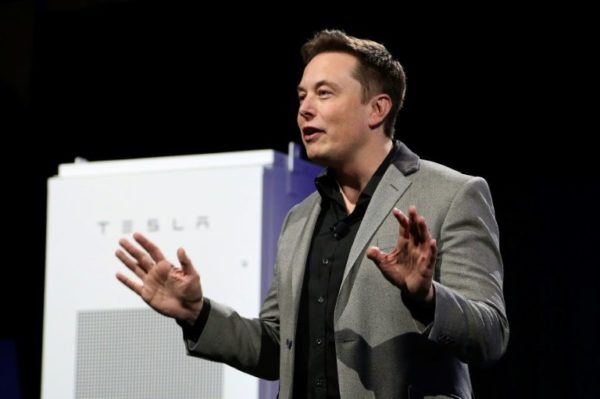Step one: Drill holes in the skull. Step two: Implant “threads” into the brain.
Elon Musk has out-Musked himself with a technological advance that blurs the line between human and machine: flexible “threads” that can be implanted into a brain and could one day allow you to control your smartphone or computer with just your thoughts.
Neuralink, one of Musk’s secretive companies, revealed the advance at a San Francisco event Tuesday, giving the public its first real peek at what the startup’s been up to since its launch two years ago. Neuralink has also created a neurosurgical robot reminiscent of a sewing machine, which can embed the threads — each much thinner than a human hair — in the brain.
So far, the threads have only been tested in animals, but Musk said he hopes to start testing in humans “by the end of next year,” a timeline that seems unrealistically ambitious. He’ll need to get the green light from the U.S. Food and Drug Administration first, which promises to be a complicated feat: The current procedure for implanting the threads requires drilling holes in the skull.
If he succeeds in getting FDA approval, it’ll likely be because he’s pitching the advance as a technology meant to address a medical condition: paralysis. The idea is that the threads will read neuronal signals from a paralyzed patient’s brain and transmit that data to a machine — say, an iPhone — enabling the patient to control it without having to tap or type or swipe.
Neuralink’s trials so far have been conducted on rats, and, it seems, monkeys. In a telling moment during the Q&A portion of the event, Musk veered off-script, saying, “A monkey has been able to control the computer with its brain. Just FYI.” (We don’t yet have evidence to that effect.) Neuralink president Max Hodak’s response: “I didn’t realize we were running that result today, but there it goes.”
If this technology is functional in human patients — and we should always be careful not to extrapolate too much from early animal studies to humans, particularly when dealing with complex brain systems — it could significantly improve quality of life for millions of people. Approximately 5.4 million people are living with paralysis in the US alone, according to a Reeve Foundation study.
As if to underscore Neuralink’s medicinal ambitions, the company’s head surgeon, Matthew MacDougall, spoke onstage dressed in blue scrubs. He emphasized that Neuralink’s main concern is patient safety, adding that eventually the company wants its brain implant procedure to be as non-invasive as Lasik eye surgery. He also said it’s “only intended for patients with serious unmet medical diseases,” like people who’ve been completely paralyzed as the result of a spinal cord injury.
But helping people with paralysis is not, it seems, Musk’s end goal — the futurist made clear he has much grander ambitions. Ultimately, he said, he aims “to achieve a symbiosis with artificial intelligence.” The goal is to develop a technology that enables humans “merging with AI” so that we won’t be “left behind” as AI systems become more and more advanced.
This fantastical vision is not the sort of thing for which the FDA greenlights human trials. But a study on helping people with paralysis? That may get a warmer reception.
Neuralink is arguably one of the foremost startups dedicated to biohacking, the quest to augment human beings’ physical and cognitive performance, often by performing radical experiments on ourselves. It’s now facing a problem common to many biohackers: The medical system, they complain, holds back progress.
“If you were to come up with a compound right now that literally cures aging, you couldn’t get it approved,” Oliver Medvedik, a biohacking advocate who directs the Kanbar Center for Biomedical Engineering at Cooper Union, recently told me. “By the definition we’ve set up, aging isn’t a disease, and if you want to get it approved by the FDA you have to target a certain disease. That just seems very strange and antiquated and broken.”
Musk said that the event, which was live-streamed, was not about showing off. “The main reason for doing this presentation is recruiting,” he said. He wants more people to apply to Neuralink’s open positions. The company currently has about 90 employees and $158 million in funding, $100 million of which reportedly came from Musk himself.
But Hodak described the purpose of the presentation differently in an interview with the New York Times. “We want this burden of stealth mode off of us so that we can keep building and do things like normal people, such as publish papers,” he said. (The company recently released a white paper explaining its new technology.)
Neuralink isn’t the first to explore brain-machine interfaces. Other companies like Kernel and Paradromics are also working in this space, as is the US military. Some scientists are currently working on brain implants that would translate paralyzed people’s thoughts into speech.
As The Verge explained, early success in the field — which focused not on speech but on movement — dates back to 2006:
The first person with spinal cord paralysis to receive a brain implant that allowed him to control a computer cursor was Matthew Nagle. In 2006, Nagle played Pong using only his mind; the basic movement required took him only four days to master, he told The New York Times. Since then, paralyzed people with brain implants have also brought objects into focus and moved robotic arms in labs, as part of scientific research. The system Nagle and others have used is called BrainGate and was developed initially at Brown University.
BrainGate relied on the Utah Array, a series of stiff needles that allows for up to 128 electrode channels. Not only is that fewer channels than Neuralink is promising — meaning less data from the brain is being picked up — it’s also stiffer than Neuralink’s threads. That’s a problem for long-term functionality: the brain shifts in the skull but the needles of the array don’t, leading to damage. The thin polymers Neuralink is using may solve that problem.
In other words, if Neuralink really has achieved what it says it’s achieved, this could be a major advance with promising applications for people down the road.
Just don’t expect those applications too soon: The company still has to prove that its system can work in human brains, and that the threads, once implanted, can survive in our brains for years without deteriorating — or causing our brains themselves to deteriorate.
Source: MSN














